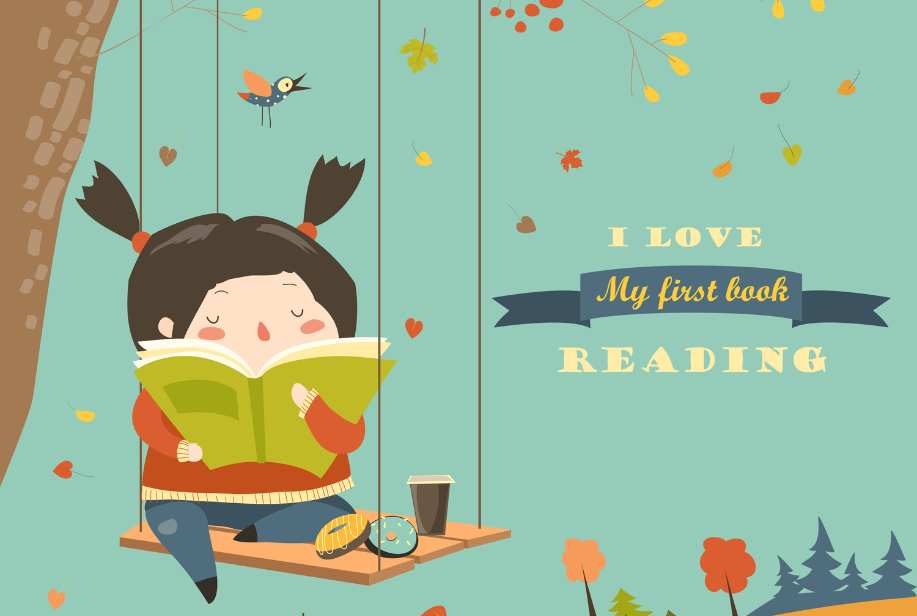
Children’s literature is more than just entertaining stories—it plays a critical role in shaping young minds, imparting values, and fostering intellectual and emotional growth. Whether through classic fairy tales, modern picture books, or young adult novels, children’s literature often explores themes of personal development, resilience, curiosity, and learning.
In this article, we will analyze the themes of growth and learning in children’s literature, looking at how these themes are presented and why they are essential for young readers.
1. The Importance of Growth and Learning in Children’s Literature
Children’s books are often designed to reflect a child’s experiences and development. These stories help young readers:
- Understand the world around them.
- Learn important moral and social lessons.
- Develop problem-solving skills and critical thinking.
- Navigate emotions and personal challenges.
Books that focus on growth and learning teach children about self-discovery, resilience, kindness, and perseverance, shaping their perspectives and emotional intelligence.
2. Common Themes of Growth and Learning in Children’s Literature
A. Self-Discovery and Identity
Many children’s books explore themes of personal identity and self-acceptance, helping young readers develop confidence and a sense of self-worth.
📖 Example: “The Ugly Duckling” by Hans Christian Andersen
- This classic fairy tale follows a young swan who feels out of place among ducks, only to realize his true identity as a beautiful swan.
- Lesson: Growth and self-discovery take time, and self-acceptance leads to confidence.
📖 Example: “Wonder” by R.J. Palacio
- A story about a boy with facial differences who navigates school and friendships.
- Lesson: Emphasizes self-acceptance and the importance of kindness.
B. Overcoming Challenges and Resilience
Stories about perseverance in the face of adversity teach children the value of hard work, courage, and determination.
📖 Example: “The Little Engine That Could” by Watty Piper
- A small train overcomes self-doubt to climb a steep hill.
- Lesson: Belief in oneself and perseverance lead to success.
📖 Example: “Charlotte’s Web” by E.B. White
- Wilbur the pig learns about friendship, love, and loss through his relationship with Charlotte the spider.
- Lesson: Life has challenges, but love, friendship, and determination help us navigate them.
C. Curiosity and the Joy of Learning
Books that encourage curiosity inspire children to ask questions, explore new ideas, and seek knowledge.
📖 Example: “Curious George” by H.A. Rey and Margret Rey
- The adventures of an inquisitive monkey who learns about the world through trial and error.
- Lesson: Curiosity leads to discovery and learning.
📖 Example: “Matilda” by Roald Dahl
- A gifted girl who loves books and learning uses her intelligence to overcome obstacles.
- Lesson: Education and knowledge empower individuals.
D. Friendship and Social Growth
Children’s books often highlight the importance of friendships and understanding different perspectives.
📖 Example: “Frog and Toad Are Friends” by Arnold Lobel
- A collection of stories about two close friends who navigate life’s ups and downs.
- Lesson: Friendship is about kindness, patience, and mutual support.
📖 Example: “Winnie the Pooh” by A.A. Milne
- Follows the adventures of Winnie the Pooh and his friends in the Hundred Acre Wood.
- Lesson: Different personalities can coexist in harmony, and friendships enrich life.
E. Moral and Ethical Growth
Many children’s books teach values such as honesty, compassion, responsibility, and justice.
📖 Example: “The Giving Tree” by Shel Silverstein
- Explores themes of selflessness and generosity.
- Lesson: True giving comes from love, but balance is important in relationships.
📖 Example: “The Lorax” by Dr. Seuss
- A cautionary tale about environmental responsibility.
- Lesson: Taking care of nature is a responsibility we all share.
3. The Role of Illustrations in Children’s Literature
For younger readers, illustrations play a crucial role in storytelling. They:
- Enhance comprehension by visually representing key themes.
- Help develop imagination and creativity.
- Reinforce emotional connections to the story.
Example: “Where the Wild Things Are” by Maurice Sendak
- The detailed illustrations convey emotions and reflect the main character’s internal journey of self-control and emotional growth.
4. How Children’s Literature Reflects Cultural and Historical Growth
Children’s literature has evolved over time to reflect societal changes and diverse voices. Today, books celebrate multiculturalism, gender equality, and social inclusion, offering children a broader perspective on the world.
📖 Example: “Last Stop on Market Street” by Matt de la Peña
- A modern book featuring a young boy learning about gratitude and community.
- Lesson: Teaches appreciation for life’s simple joys and the value of different perspectives.
📖 Example: “Hair Love” by Matthew A. Cherry
- Celebrates self-acceptance and cultural identity through a father helping his daughter embrace her natural hair.
- Lesson: Encourages pride in one’s heritage and uniqueness.
5. The Impact of Children’s Literature on Cognitive and Emotional Development
Reading builds a child’s cognitive, emotional, and social skills by:
- Enhancing vocabulary and language development.
- Improving critical thinking and problem-solving abilities.
- Encouraging empathy by allowing children to see the world through different perspectives.
Children who engage with books that explore growth and learning tend to develop:
- Better emotional regulation by understanding complex feelings.
- Stronger communication skills through exposure to diverse narratives.
- A lifelong love for learning that extends beyond childhood.
6. Encouraging Reading and Literary Growth in Children
Parents, teachers, and caregivers can foster a love of reading by:
- Choosing age-appropriate books that align with a child’s development.
- Encouraging discussions about the themes and lessons in stories.
- Introducing diverse literature to expose children to different cultures and perspectives.
- Making reading fun through interactive storytelling, audiobooks, and creative activities.
Example: Book Clubs and Storytelling Circles
- Creating a space for kids to share their thoughts and engage in discussions enhances comprehension and makes reading social and enjoyable.
Conclusion
Children’s literature is a powerful tool for teaching life lessons and fostering growth and learning. Through engaging stories, young readers develop resilience, curiosity, empathy, and moral understanding. Whether through self-discovery, overcoming challenges, or forming friendships, the themes in children’s books leave a lasting impact.
By introducing children to a variety of books that explore these essential themes, we help shape thoughtful, compassionate, and lifelong learners. In a world filled with stories, the right book can inspire a child to dream, grow, and learn—one page at a time. 📚✨







